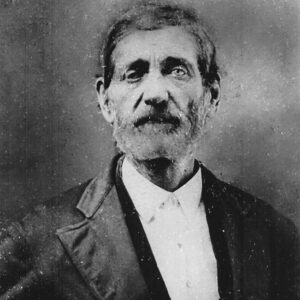calsfoundation@cals.org
Action near Fayetteville (July 15, 1862)
| Location: | Washington County |
| Campaign: | None |
| Date: | July 15, 1862 |
| Principal Commanders: | Major William Miller (US); Brigadier General James Spencer Rains, Colonel John Coffee (CS) |
| Forces Engaged: | 550 cavalry, 2 mountain howitzers (US); Unknown (CS) |
| Estimated Casualties: | Unknown (US); Unknown (CS) |
| Result: | Union victory |
Part of a Federal expedition from Missouri into northwestern Arkansas, this action is just one of many fought near Fayetteville (Washington County).
In July 1862, Union forces in Missouri received word that Confederates were massing near Fayetteville. Brigadier General Egbert Brown ordered troops at Cassville to move into Arkansas and destroy the enemy units. In order to achieve complete surprise, Brown ordered that the Federals arrest everyone they encountered on the road to Arkansas and to move at night in order to launch an early morning attack on the Confederates.
Commanded by Major William Miller of the Second Wisconsin Cavalry, the Federal force consisted of detachments from the Second Wisconsin, the Third Missouri State Militia, and the Tenth Illinois Cavalry. Supporting the cavalry were two mountain howitzers, bringing the total command to 550 men. Refugees from Arkansas served as scouts and guides as the unit moved southward.
The Federals cautiously moved close to the Confederate camp, located eight miles southwest of Fayetteville. The enemy force was estimated to number around 1,600 and consisted of men under the command of Missouri State Guard Brigadier General James Spencer Rains, Colonel John Coffee, and other officers.
Early on the morning of July 15, the Federals shelled the Confederate camp and followed with several cavalry charges. The Confederates broke and fled in confusion. Pursuing the enemy for approximately twelve miles, the Union fighters broke off their chase near Cane Hill due to the condition of their horses. The unit returned to Fayetteville, where the men and horses rested for several days.
The event was a complete Federal success, with the Union troops moving seventy-five miles into enemy territory in approximately thirty-six hours. While casualty figures do not exist, Federal officers stated that large numbers of the enemy were killed, wounded, or captured while few Union soldiers met the same fate.
In an area of the state that saw extreme fighting over the course of the war, this minor action prevented Confederate forces from establishing a foothold in the area in the summer of 1862.
For additional information:
The War of the Rebellion: A Compilation of the Official Records of the Union and Confederate Armies. Series 1, Vol. 13. Washington DC: Government Printing Office, 1889.
David Sesser
Henderson State University
 Civil War Timeline
Civil War Timeline Military
Military ACWSC Logo
ACWSC Logo  James S. Rains
James S. Rains 




Comments
No comments on this entry yet.